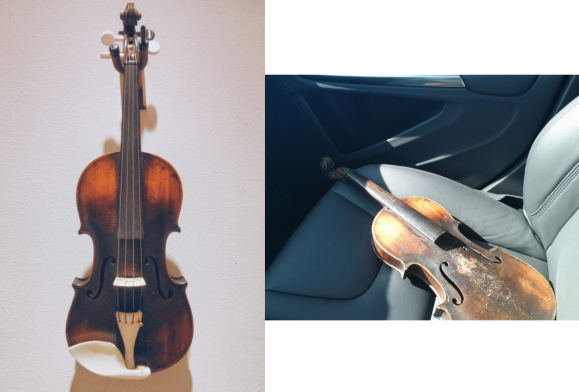Every family has an heirloom. It might be a watch, a book, or a stuffed pet. [Mike’s] family heirloom was an antique violin. Well, not an entire violin. This particular violin consisted of a detached neck, a body, and one tuning peg. As far as [Mike] knows, no living member of his family has heard it played. [Mike] decided to restore it to playable condition.
[Mike’s] violin had been brought over to America when his family emigrated from France. The primary reason it has been saved is because it bears the name Stradivarius. Stradivarius copies and tributes are plentiful in the wild. Many of the copies are now antiques and good playing instruments in their own right, though not nearly as revered as the real thing. [Mike’s] first step was to determine if his violin was a real Strad, or a copy. Luckily he was able to get in touch with the caretaker of a real Strad in Milwaukee. It turns out that the label on his violin marks it as a copy. According to the caretaker, genuine Stradivarius instruments were signed directly on the wood. The caretaker was further able to identify that [Mike’s] violin was about 100 years old, and a relatively cheap model for the time.
While it wasn’t a real Stradivarius, the violin was still an important part of [Mike’s] family history, and deserved to be played again. Rather than re-create the missing parts to perfectly match the originals, [Mike] decided to use the resources of the Milwaukee Makerspace to create 3D printed parts.
Similar violin parts were scanned at the Makerspace. The final .stl files were sent to Shapeways for printing. [Mike] sent all the parts to a luthier for final fitting and assembly. [Mike’s] family heirloom is no longer an item to be hidden away, but a living breathing instrument for a new generation to enjoy.











